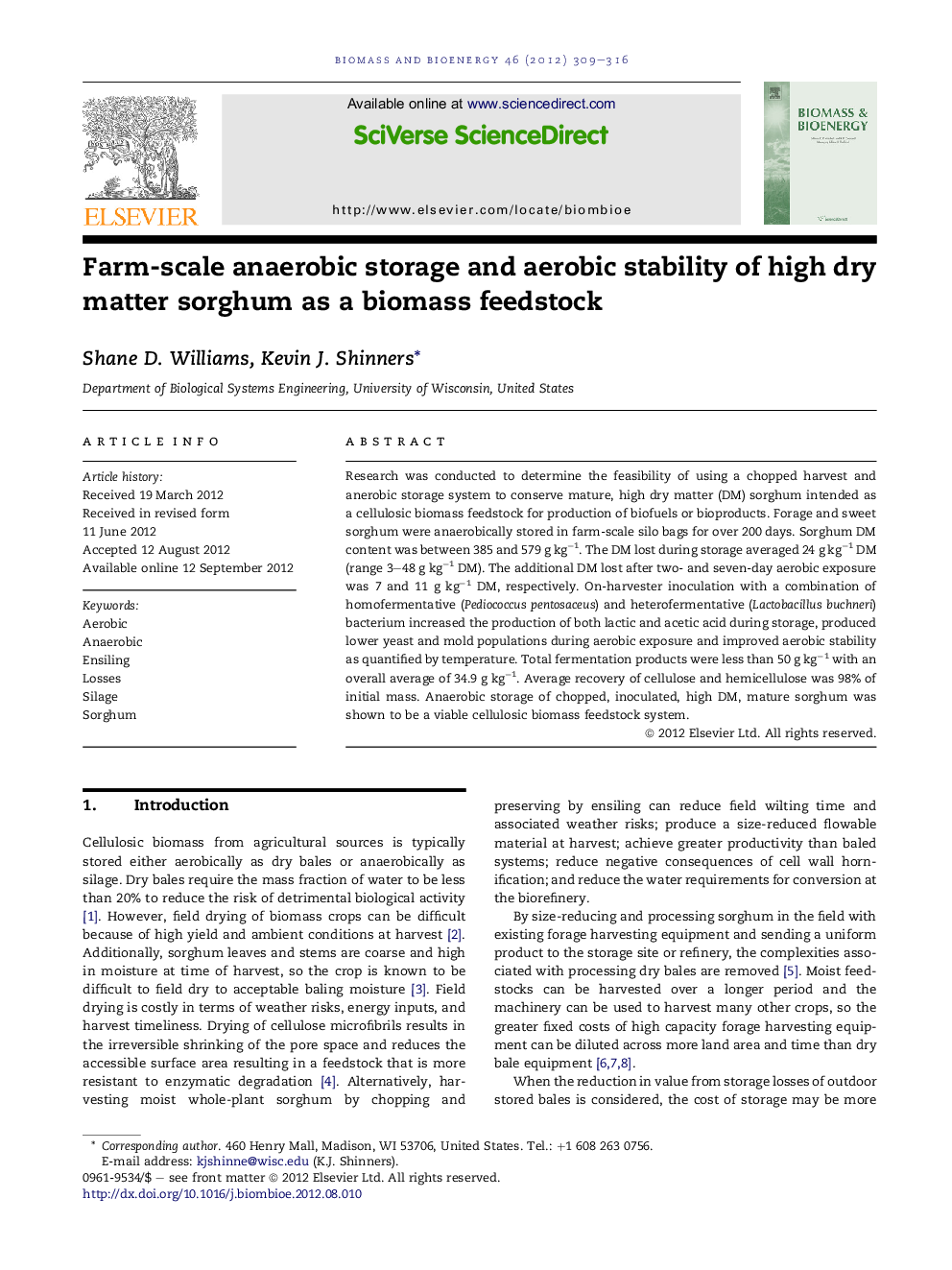| Article ID | Journal | Published Year | Pages | File Type |
|---|---|---|---|---|
| 677165 | Biomass and Bioenergy | 2012 | 8 Pages |
Research was conducted to determine the feasibility of using a chopped harvest and anerobic storage system to conserve mature, high dry matter (DM) sorghum intended as a cellulosic biomass feedstock for production of biofuels or bioproducts. Forage and sweet sorghum were anaerobically stored in farm-scale silo bags for over 200 days. Sorghum DM content was between 385 and 579 g kg−1. The DM lost during storage averaged 24 g kg−1 DM (range 3–48 g kg−1 DM). The additional DM lost after two- and seven-day aerobic exposure was 7 and 11 g kg−1 DM, respectively. On-harvester inoculation with a combination of homofermentative (Pediococcus pentosaceus) and heterofermentative (Lactobacillus buchneri) bacterium increased the production of both lactic and acetic acid during storage, produced lower yeast and mold populations during aerobic exposure and improved aerobic stability as quantified by temperature. Total fermentation products were less than 50 g kg−1 with an overall average of 34.9 g kg−1. Average recovery of cellulose and hemicellulose was 98% of initial mass. Anaerobic storage of chopped, inoculated, high DM, mature sorghum was shown to be a viable cellulosic biomass feedstock system.
► High dry matter (DM), mature sorghum was chopped and ensiled in silo bags for over 200 days. ► The DM lost during storage averaged 24 g kg−1 DM (range 3–48 g kg−1 DM). ► After two- and seven-day aerobic exposure, the additional DM lost was 7 and 11 g kg−1 DM, respectively. ► On-harvester bacterial inoculation improved aerobic stability as quantified by material temperature. ► Anaerobic storage of high DM sorghum was shown to be a viable cellulosic biomass feedstock system.
